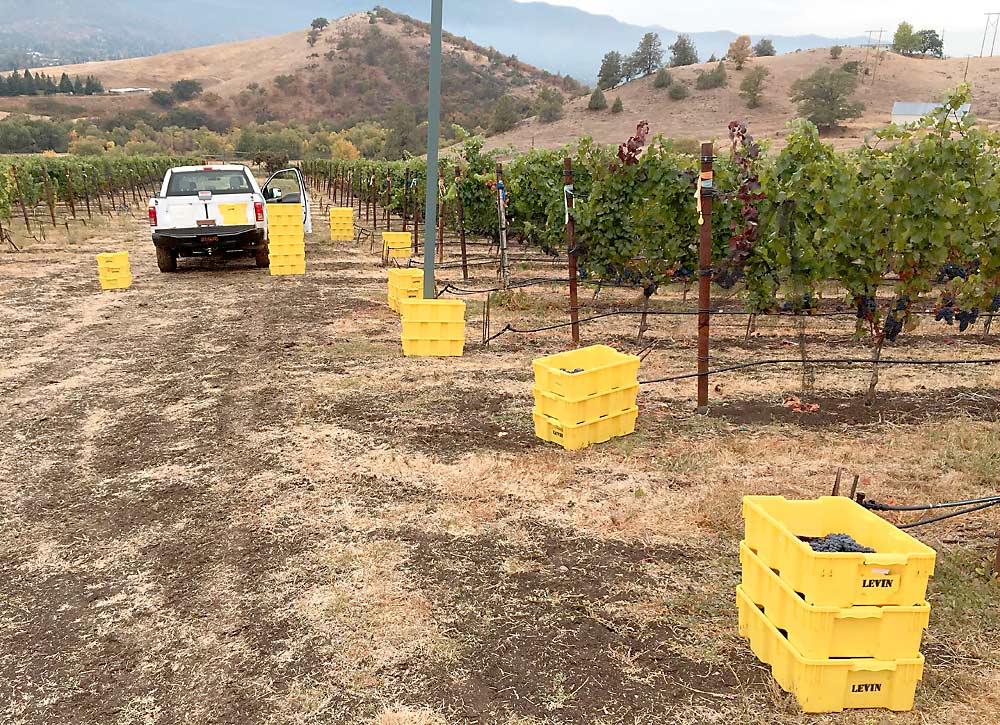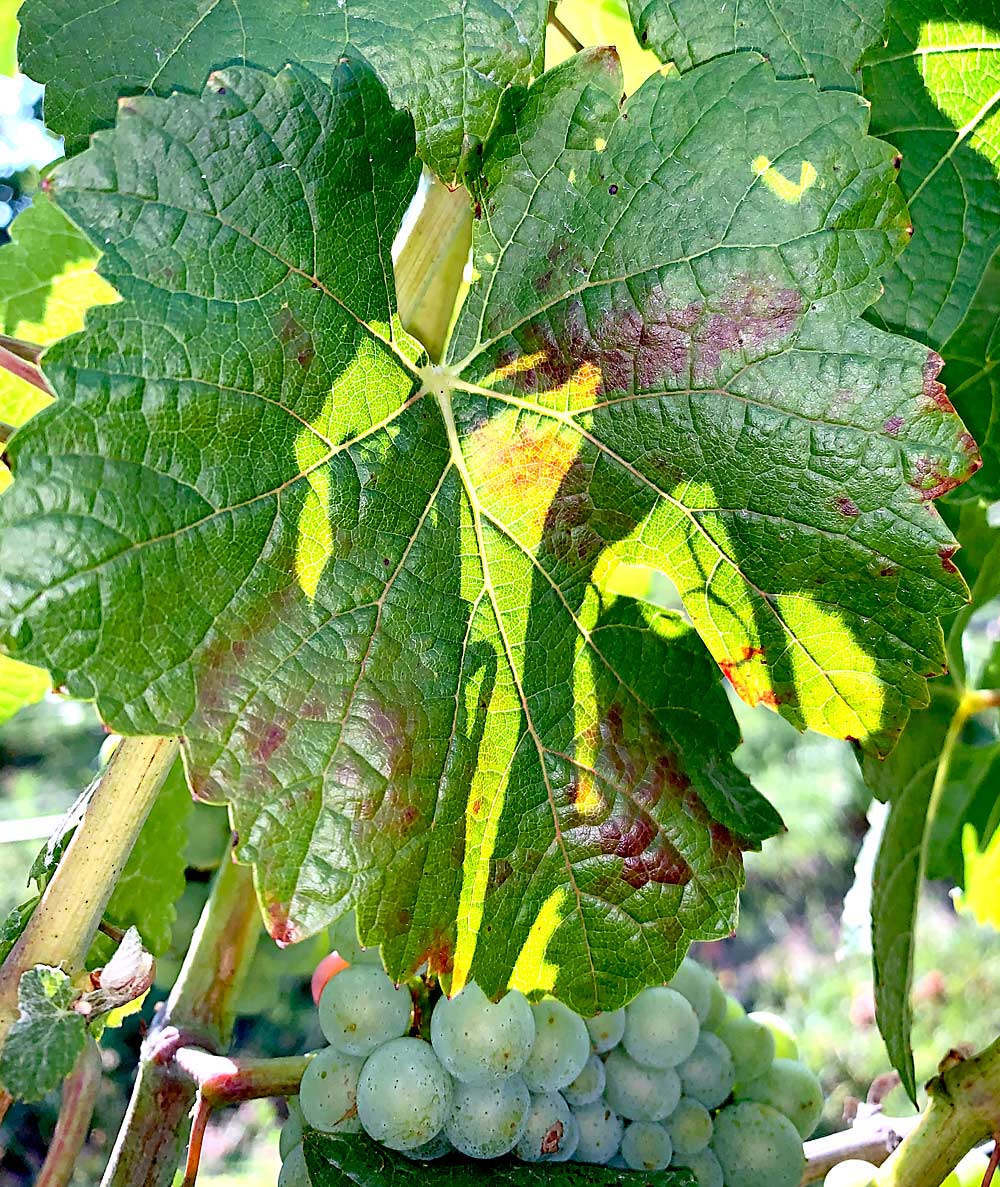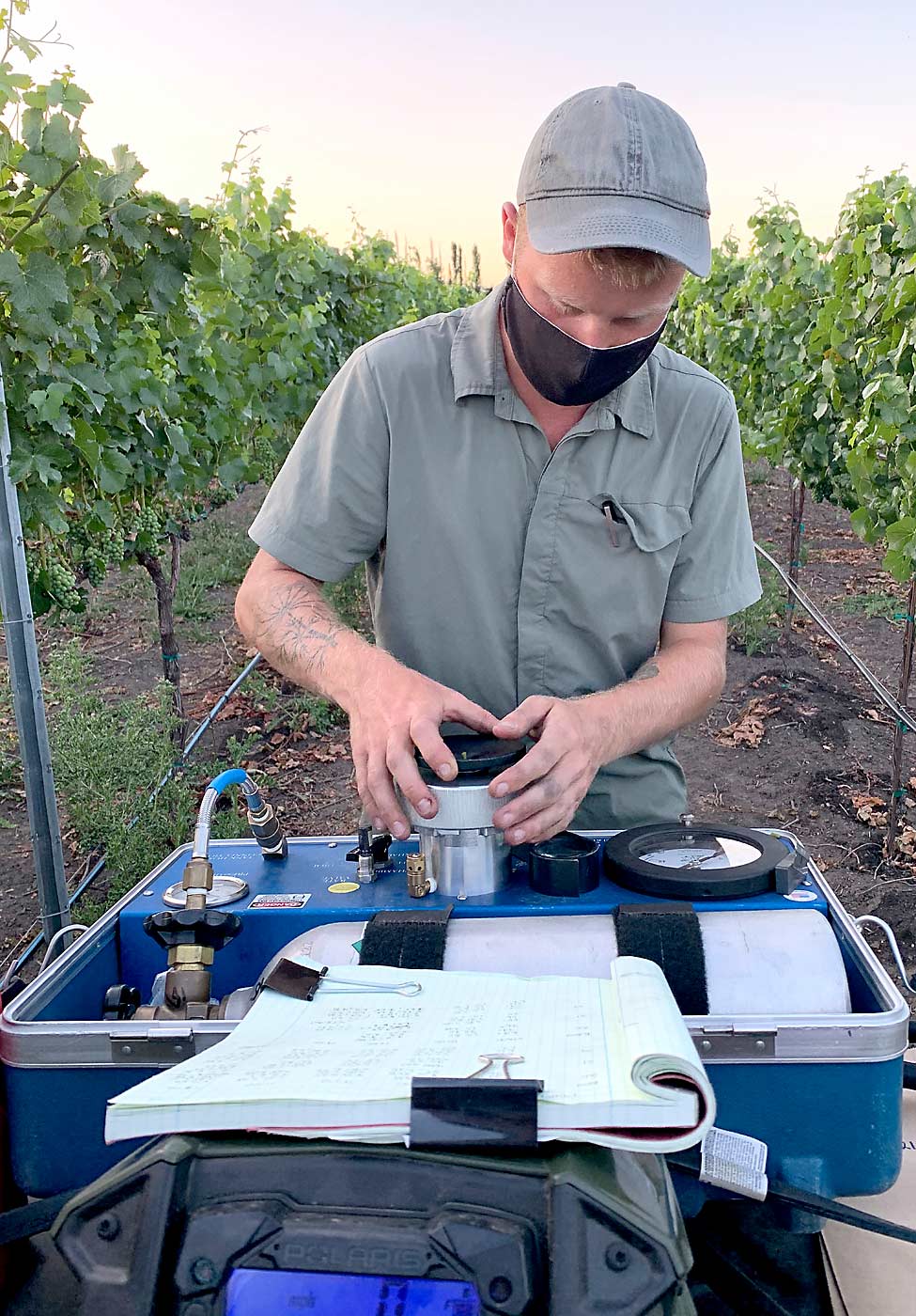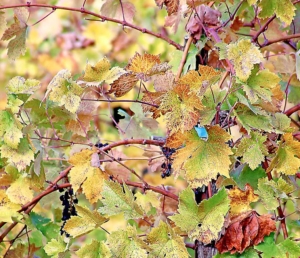
After years spent studying hundreds of potential grapevine red blotch virus vectors in Oregon vineyards, researchers still can’t say with certainty which insect or insects are capable of transmitting it there.
That’s the bad news. The good news: Insect-vectored transmission appears to play a smaller role than infected planting stock, according to a team of red blotch experts at Oregon State University who shared the latest research and extension findings in vectors, virology and vineyard management for the disease during a webinar series late last year.
In fact, as researchers and growers learn more about the virus in Oregon vineyards, the initial panic has generally been replaced by pragmatism.
“The sense that the sky is falling is no longer there,” said Alexander Levin, a viticulturist who joined the Southern Oregon Research and Extension Center in 2016, as many young vineyards were starting to see symptoms. Growers are grappling with unknowns about spread and whether to remove infected blocks, but they also are learning how changes in management could enable them to continue to farm with this disease.
After a positive test result, people ask if they should remove vines, “and I don’t have an answer for them. It’s a hard decision to make,” said Patty Skinkis, statewide viticulture extension specialist.
In some places, the virus is damaging fruit quality, while in other places “there are vineyards that we’ll never know even had the problem,” she said. “That’s probably how it got moved around so far, with Pinot Noir budwood.”
What is clear is that growers who see symptoms must deal with the virus as a regular part of vineyard management, Levin said, as scouting for and removing infected vines early can go a long way to keeping red blotch in check.
“All of that is so much less of a headache if you start early,” he said. “It’s not a simple solution with immediate results; there’s marking vines during harvest, removing them in the winter and replanting in the spring. … But your production will be so much better if this is one of the things you do.”

Quality impacts? It’s complicated.
Grapevine red blotch virus slows fruit ripening, reducing sugar and color development, but, unlike the grapevine leafroll viruses, it does not seem to reduce yield, Levin said.
The symptoms are consistent, but the degree to which they matter is complicated, he said, because it depends on what winemakers want to do with the grapes. As for the delayed ripening, if it’s pushing harvest back three and a half weeks in September, that may not be as much of a problem as pushing harvest back three and a half weeks later into October, Levin said.
Meanwhile in the Willamette Valley, most growers with infected vineyards have still been able to ripen their fruit, Skinkis said.
Growers worry when they see the telltale symptoms in the canopy, she said, but they rarely report any fruit quality impacts. “If they actually look at their production, it’s not causing them more costs or losing production,” she said.
She attributes the lack of impacts to the wet growing conditions in the Willamette, as well as in the Eastern U.S., where red blotch-infected vines also tend to show limited impacts compared to drier climates in California, Southern Oregon and Eastern Washington.
That aligns with what Levin has found in Southern Oregon, where he led trials looking at the effect of deficit irrigation on infected vines.
“If the vine is sick and you stress it out, it’s going to be worse than if you kept it well-irrigated,” he said. “Now, watering more than normal actually makes it a little better.”
Since the virus seems to inhibit photosynthesis, more irrigation works in two ways, Levin said: by encouraging more photosynthesis in the existing canopy and spurring the growth of more young leaves.
That’s the only management strategy he’s documented a benefit from so far. Extra fertilizer didn’t provide a ripening boost, and growers tried thinning to see if reducing the crop load could advance ripening, but “all it did was reduce yield,” Levin said. “You are just dropping fruit on the ground.”
Levin and his colleagues, pathologist Achala KC and entomologist Rich Hilton, are working with researchers from the University of California, Davis on a $3 million U.S. Department of Agriculture Specialty Crop Research Initiative project aimed at furthering the understanding of the virus, its vectors and potential management strategies.

Insect vectors and human vectors
Many Oregon growers report signs of spread in the vineyards, but, given that vines can be infected for years before showing red blotch symptoms, it can be hard to differentiate between that latency and actual spread, said Vaughn Walton, an OSU entomologist.
There certainly are places where the patten of spread appears to be vector-driven in California and Southern Oregon, he said, originating at a node and spreading around it over time.
“There is evidence that there are vectors, but we don’t know what they are,” he said. “You’re looking for a needle in a haystack, so it’s going to take time.”
A handful of labs in California and Oregon are all looking for vectors, which means they need to prove that an insect can not only pick up the pathogen while feeding on an infected grapevine but also transmit it to a clean vine.
Researchers at UC Davis have shown that the three-cornered alfalfa treehopper (Spissistilus festinus) can transmit the virus in the greenhouse, but researchers in Oregon have not been able to confirm it, Walton said.
“For transmission to be effective, the bug has to be able to take up the virus and transmit the virus at relatively high levels. The treehoppers can take up the virus, but transmission is very low,” he said. Plus, growers say they’re not finding treehoppers in the vineyard.
Another likely suspect under review: the sharpnosed leafhopper (Scaphytopius magdalensis), which appears to spend more time feeding on grapevines, Walton said, and appears to pick up higher levels of the pathogen. Transmission research continues.
In Washington and in the Eastern U.S., there is no evidence of insect-driven spread, just people-driven spread since growers unwittingly planted with infected stock.
“The most critical thing is clean plants,” said Bob Martin, a plant pathologist with the U.S. Department of Agriculture based in Corvallis, Oregon. “If it’s primarily spread through planting material, then I think it’s a manageable issue.” •
—by Kate Prengaman







Leave A Comment